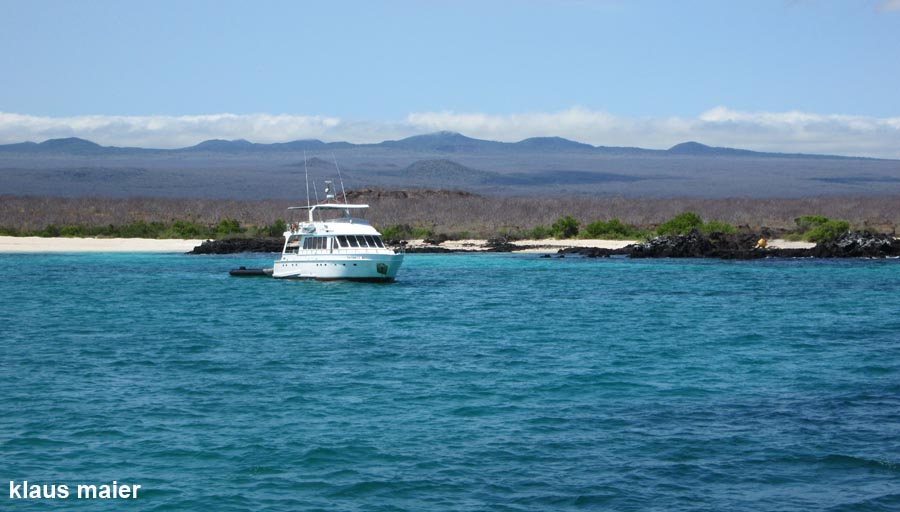
The Galapagos Islands
The Galapagos Islands are part of Ecuador and are located 928 kilometers east of South America in the Pacific. In Spanish they are called Islas Galapagos. The archipelago consists of 13 larger islands and over 100 small islands. The five inhabited islands include Baltara, Floreana, Isabela, Santa Cruz and San Cristobal. The archipelago was created by volcanism, which was created by the friction between the Nazca plate (Pacific) and the South American plate. There are still many active volcanoes on the Galapagos Islands.
The Galapagos Islands were discovered by the Spaniards in 1535 and annexed by Ecuador in 1832. The archipelago was made famous by Charles Darwin, who explored the flora and fauna here in 1835. Because of the remote location, many endemic species have developed here. For this reason, almost the entire archipelago is under nature protection. The Galapagos Islands are a UNESCO World Heritage Site. G
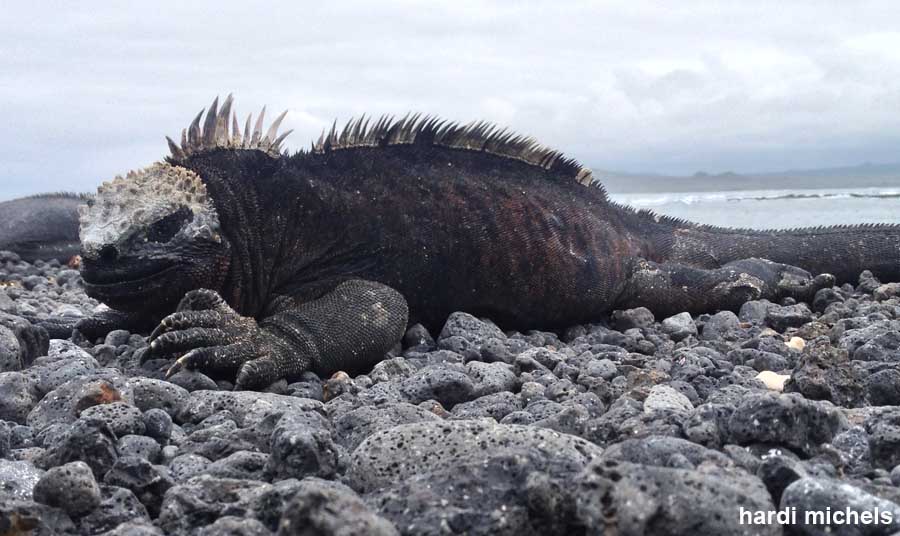
Marine Iguanas
After the giant tortoises, the marine iguanas are one of the most famous animals in the Galapagos Islands. The endemic species is the only lizard in the world looking for its food in the water. The marine iguanas dive up to 15 m deep to eat algae. After the dives, the warm, warm lizards have to warm up in the sun. The marine iguanas (scientific name Amblyrhychus) belong to the iguana family and live on all islands in the Galapagos Archipelago. Adult animals can grow up to 1.3 m long. G
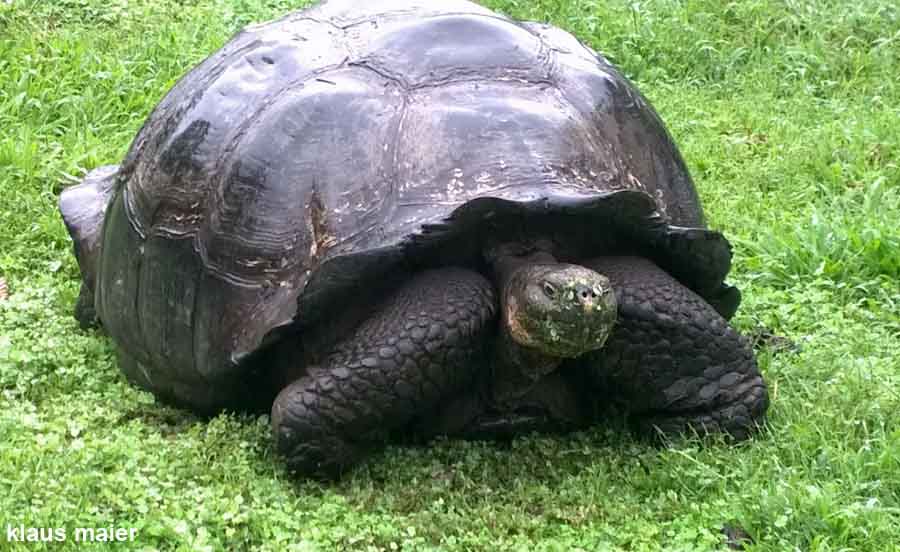
Galapagos giant tortoise
The Galapagos giant tortoise is one of the island group's greatest attractions. Since they are tortoises, different species have also developed on the different islands. Since some species are extinct, there are only 10 subspecies left today. All species come together to around 20,000 animals.
Depending on which plants eat the turtles, they also have different shells. Giant turtles that feed on bushes need a different shell than species that only eat from the ground.
How the giant tortoises came to the Galapagos Islands is not known. Some scientists suspect the principle of island dwarfing, meaning that the animals were originally much larger and are now small descendants of former giants. Others suspect that small turtles came to the islands on flotsam and developed from giant grazing turtles here without competition from other grazing animals.
The giant tortoises gave their name to the archipelago, Galapago means saddle for women in Spanish. The Spaniards somehow reminded the giant tortoises of a saddle with a hump. The species Becki (Isla Isabela), Ephippium (Isla Pinzon) and Hoodensis (Isla Espanola) have this special saddle back shape. The hump is not as pronounced in the other species. G
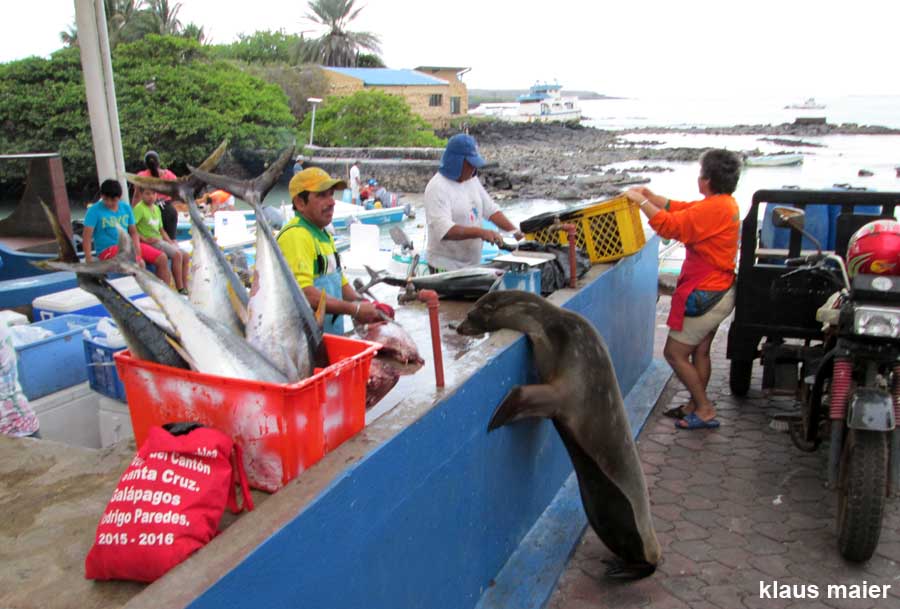
Puerto Ayora
Puerto Ayora is the largest city in the Galapagos Islands, the town with around 15,000 inhabitants is located on the second largest island in the Santa Cruz archipelago. This island also has the largest airport and most residents. There is a small fish market at the port of Puerto Ayora, including sea lions and pelicans. The main attraction of Puerto Ayora is the Estacion Cientifica Charles Darwin on Ave Charles Darwin. Here you will find the national park administration and various research facilities on the flora and fauna of the Galapagos Islands.
Small boats leave the harbor for the other populated islands of the archipelago. G
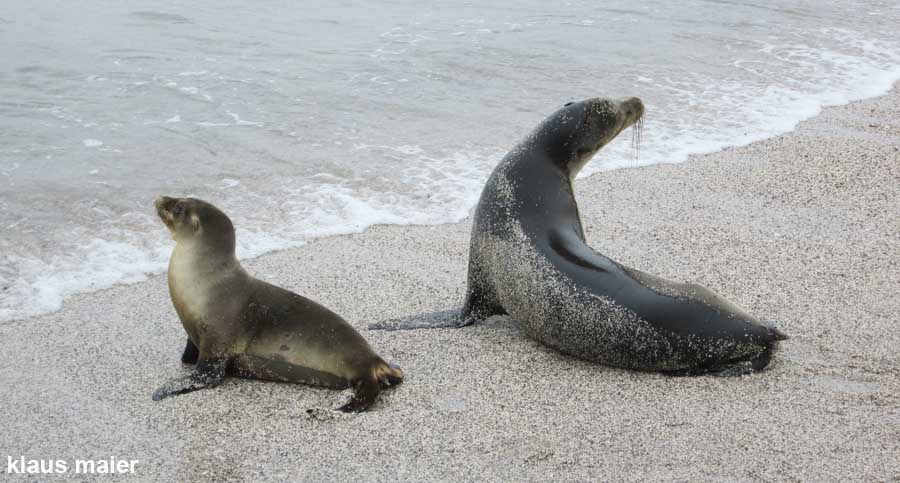
Galapagos sea lions
The Galapagos sea lions (ear seals) are a seal species that differ only slightly from other seal species in America. The sea lions are one of the most popular photo opportunities in the Galapagos Islands, because the animals are not afraid of humans, tourists come very close to them. The sea lions are native to all islands in the archipelago. They hunt fish and eat snails, while diving up to 50 m deep. Around 30,000 sea lions live on the Galapagos Islands. Very nice photos can be taken on Isla Santa Fé in Barrington Bay, there is a sandy beach with a small seal colony. G
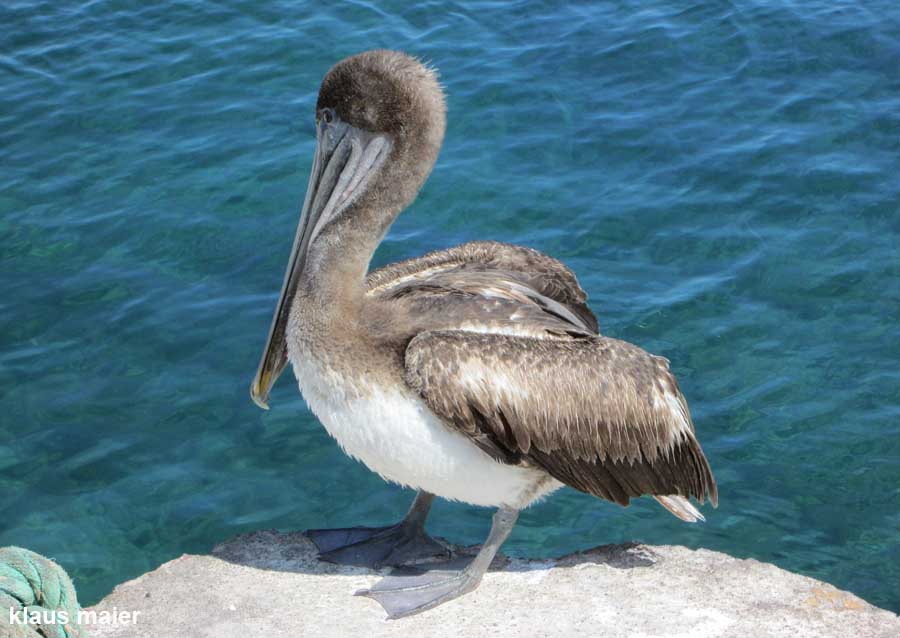
Galapagos Pelicans
The pelicans in the Galapagos Islands belong to the family of brown pelicans. They are not an endemic species, their range extends from the southern United States to Chile. The brown pelicans hunt fish by diving into the water. You can also see the pelicans near fish markets. Due to their large wingspan of up to 2 meters, the pelicans can glide long over the sea and cover long distances. G
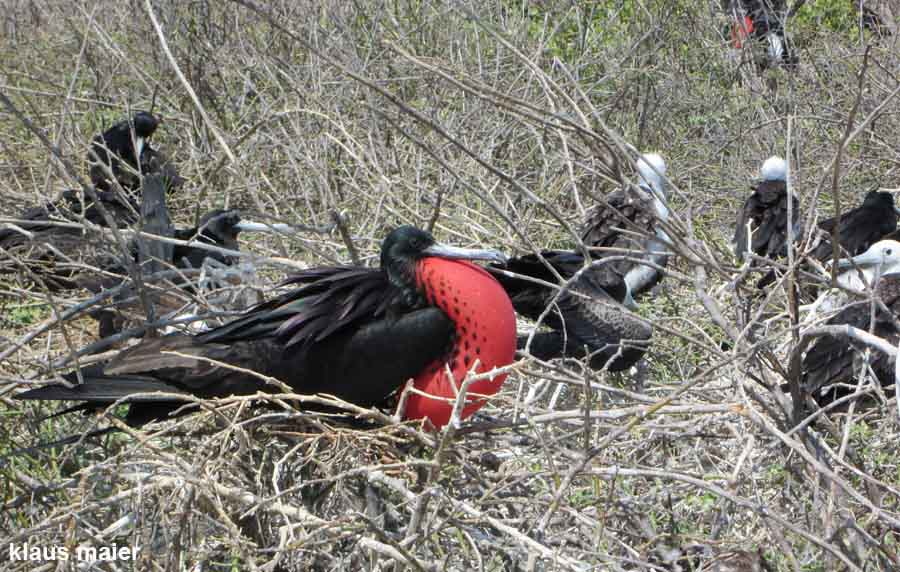
Red Frigatebirds
The red frigatebirds with their red throat sac are one of the most striking bird species on the Galapagos Islands. The red throat sac is only found in the males who inflate it during the mating season. Frigate birds live on islands in tropical waters, they are common all over the world. The frigatebird birds on the Galappagos Islands are very large seabirds with spans well over 2 meters. G
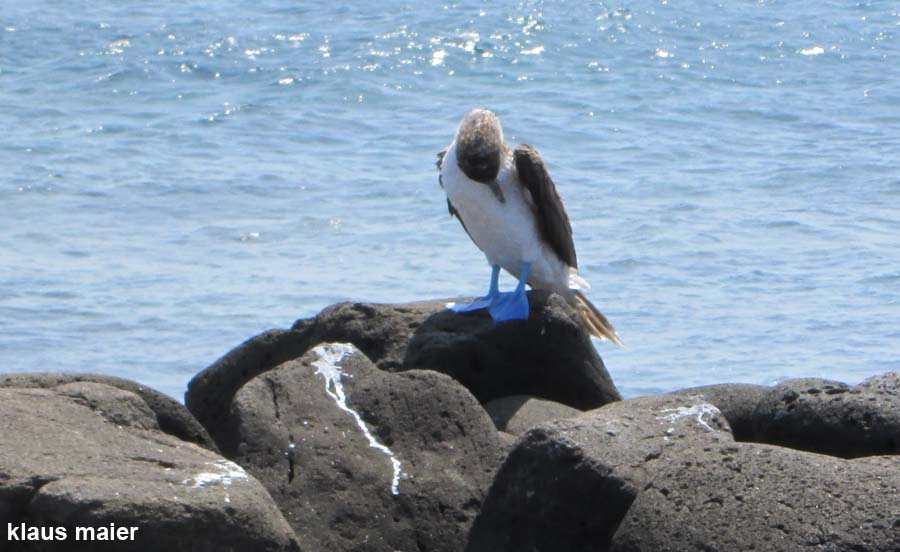
blue-footed booby
Another seabird that breeds in the Galapagos Islands is the blue-footed booby. You can easily recognize him by the blue webbed feet. Blue-footed boobies live on the Mexican Pacific coast and on the coast of Ecuador, but their largest population (around half) lives on the Galapagos Islands. The blue-footed boobies are known for their courtship dance, males with strong shades of blue have the best chances. This is due to the fact that the color of the feet quickly turn gray when there is a lack of food. The females prefer strong, well-nourished partners. G
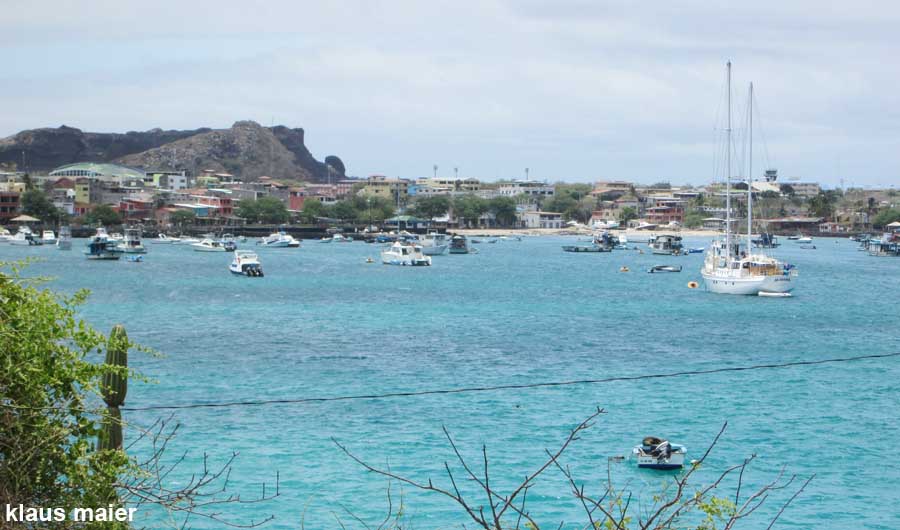
Puerto Baquerizo Moreno
Puerto Baquerizo Moreno is the capital of the Galapagos Province. Nevertheless, the city with around 7,000 inhabitants is a dreamy small town. Puerto Baquerizo Moreno is on Isla San Cristobal, which is the easternmost of the Galapagos Islands. From Guayaquil on the Ecuadorian mainland, there are flights to Puerto Baquerizo Moreno. There are hotels and restaurants in the city. This makes Puerto Baquerizo Moreno the basis for numerous trips to beaches or the volcanic center of the island. The San Cristobal giant tortoise also lives on the island. G
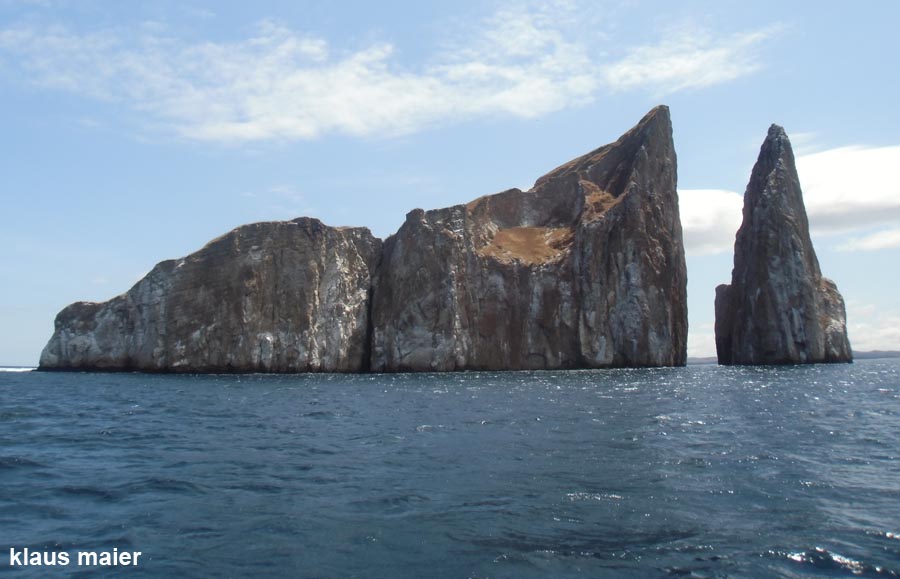
Roca Leon Dormido
The Roca Leon Dormido (rock of the sleeping lion) is a pair of rocks that rises 114 m from the water. The two volcanic rocks are located in front of Isla San Cristobal about 17 kilometers north-east of Puerto Baquerizo Moreno. There are many colonies of seabirds on the rocks, such as blue-footed boobies and the tropical bird Phaeton. The sea around the Roca Leon Dormido is a great diving area. Here you can see rays, hammerhead sharks and sea turtles. G
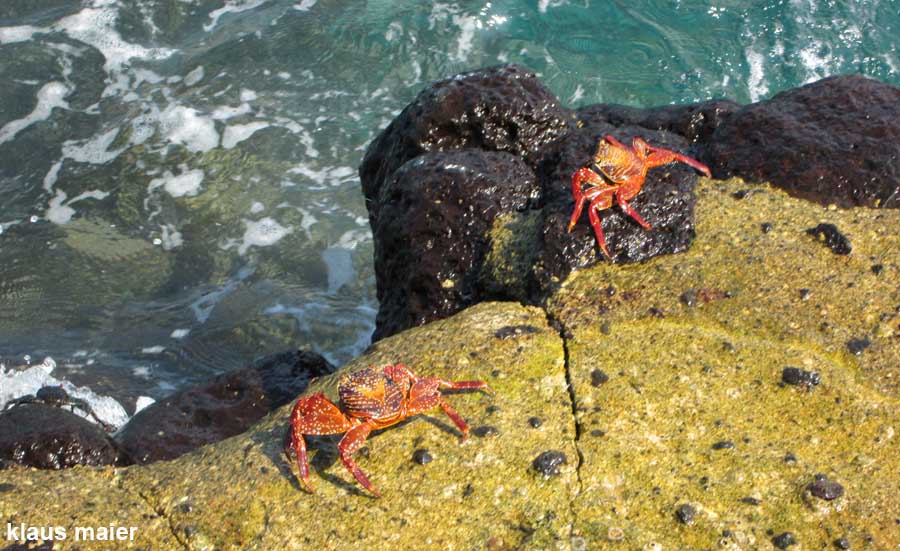
red cliff crab
The red cliff crab is called Zayapa by the locals. The crab is a common species throughout South America and can also be found in Central America. You can see the nimble animals particularly well on rocky coastal sections. On San Cristobal you can see the red cliff crab particularly well at Punta Pitt, in the northeast of the island. G
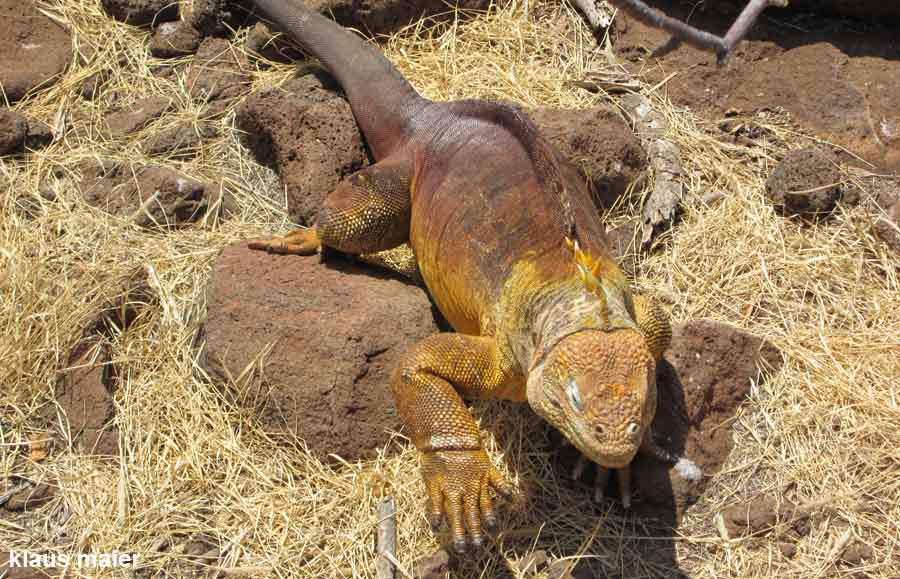
Galapagos land lizard
The Galapagos iguana is also a land lizard that only occurs on the islands of Santa Cruz, Isabela and Fernandina. In the past, glanders also lived on other Galapagos islands, but were eradicated there. The iguanas are about 1.2 meters long, have long claws and strong legs. The special thing about the Galapagos iguanas is their color, there are yellow, gray and brown specimens. The lizards feed on cacti, mostly opuntias. G
Map Galapagos Islands
ads
Travel Guide Galapagos Islands
Welcome to the Galapagos Islands
The Galapagos Islands are located in the Pacific, far from the mainland. As a result, endemic animals and plants have developed here, which led Charles Darwin to his theory of evolution. Most of the islands and the sea in between are protected. This makes the Galapagos Islands a very popular travel destination for tourists from all over the world. This guide introduces the main attractions of the Galapagos Islands.
ads
ads


